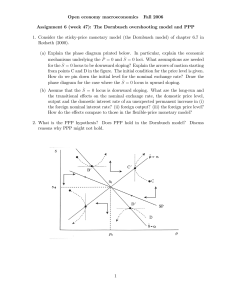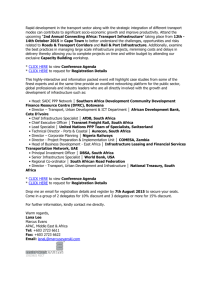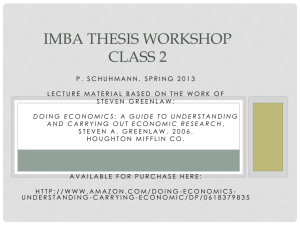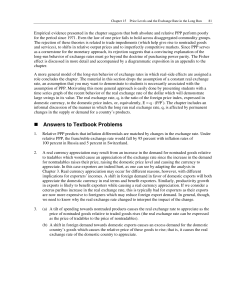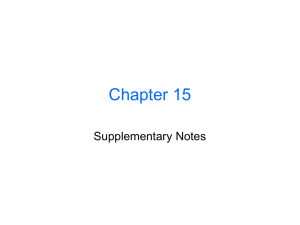Answers - UCSB Economics
advertisement
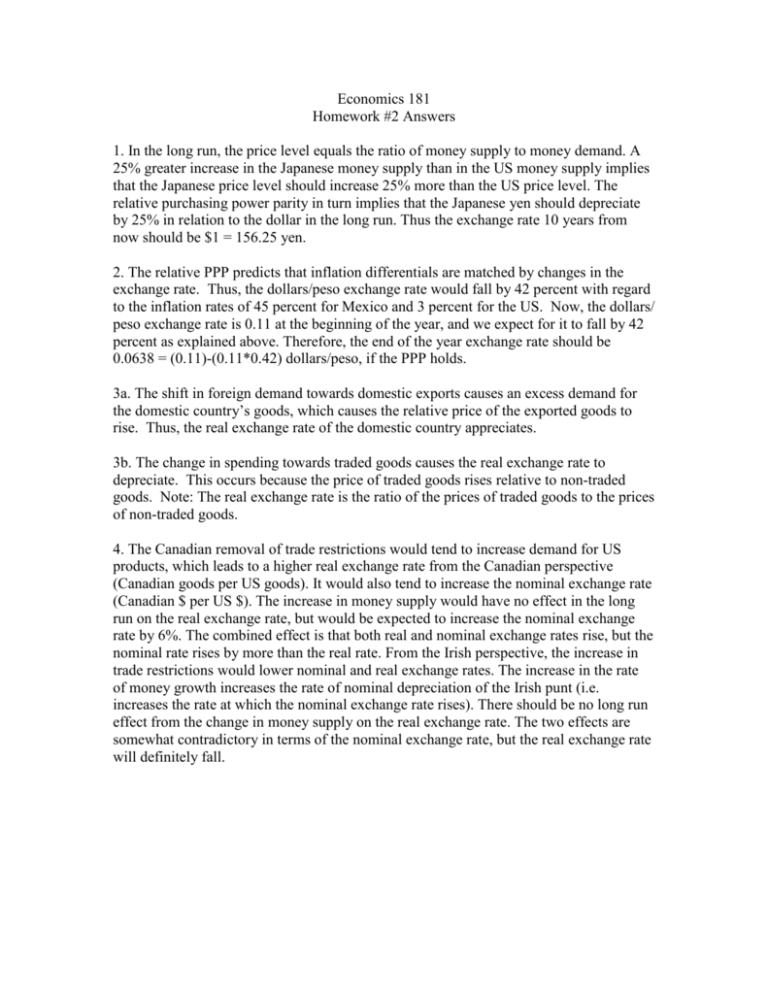
Economics 181 Homework #2 Answers 1. In the long run, the price level equals the ratio of money supply to money demand. A 25% greater increase in the Japanese money supply than in the US money supply implies that the Japanese price level should increase 25% more than the US price level. The relative purchasing power parity in turn implies that the Japanese yen should depreciate by 25% in relation to the dollar in the long run. Thus the exchange rate 10 years from now should be $1 = 156.25 yen. 2. The relative PPP predicts that inflation differentials are matched by changes in the exchange rate. Thus, the dollars/peso exchange rate would fall by 42 percent with regard to the inflation rates of 45 percent for Mexico and 3 percent for the US. Now, the dollars/ peso exchange rate is 0.11 at the beginning of the year, and we expect for it to fall by 42 percent as explained above. Therefore, the end of the year exchange rate should be 0.0638 = (0.11)-(0.11*0.42) dollars/peso, if the PPP holds. 3a. The shift in foreign demand towards domestic exports causes an excess demand for the domestic country’s goods, which causes the relative price of the exported goods to rise. Thus, the real exchange rate of the domestic country appreciates. 3b. The change in spending towards traded goods causes the real exchange rate to depreciate. This occurs because the price of traded goods rises relative to non-traded goods. Note: The real exchange rate is the ratio of the prices of traded goods to the prices of non-traded goods. 4. The Canadian removal of trade restrictions would tend to increase demand for US products, which leads to a higher real exchange rate from the Canadian perspective (Canadian goods per US goods). It would also tend to increase the nominal exchange rate (Canadian $ per US $). The increase in money supply would have no effect in the long run on the real exchange rate, but would be expected to increase the nominal exchange rate by 6%. The combined effect is that both real and nominal exchange rates rise, but the nominal rate rises by more than the real rate. From the Irish perspective, the increase in trade restrictions would lower nominal and real exchange rates. The increase in the rate of money growth increases the rate of nominal depreciation of the Irish punt (i.e. increases the rate at which the nominal exchange rate rises). There should be no long run effect from the change in money supply on the real exchange rate. The two effects are somewhat contradictory in terms of the nominal exchange rate, but the real exchange rate will definitely fall. 5. Which of the following statements refer to absolute PPP, which refer to relative PPP, and which are not related at all to PPP? a. Unrelated to PPP. b. Absolute PPP. c. Relative PPP. d. Relative PPP. e. Unrelated to PPP. 6. a. A drop in the money supply raises the interest rate from R0 to R1. This corresponds to a movement from point a to point b in the lower graph. b. By itself, this increase in the interest rate would lower the exchange rate as shown in the upper graph as a movement from point A to point B. c. A permanent drop in the money supply would alter expectations of the long run price level. Agents would expect a 10% lower price level and (because of PPP) a 10% lower long run value for the exchange rate. d. The change in expected exchange rate shifts the US returns curve in as shown in the upper graph and the new equilibrium shifts from point B to point C. Again the exchange rate drops. e. In the long run, prices are flexible and the drop in the money supply is fully compensated by a 10% drop in the Swiss price level. Thus the real money supply returns to its original position and the equilibrium in the money market moves back from point b to point a. At the same time the Swiss interest rate returns to its original value. In the asset market, the lower interest rate induces a movement along the US returns curve to point D. Thus the exchange rate increases somewhat. f. There is overshooting here as the exchange rate moved past its new long run position in the short run so it had to reverse directions in the transition from the short to long run.
